Switching the Reality Channel
Psychedelics as tools for the discovery and exploration of new worlds
"You are in possession of an exquisite machine motionlessly buoyant in the softly circulating fluids of your skull. A world-building machine. And psychedelic molecules are the tools for tuning and operating this machine.”
When I first read about DMT as a teenager, this astonishing molecule that could literally transport you to a bizarre hyperdimensional reality filled with giggling elf-like beings that would dance and sing impossible objects into existence, I’m not sure I really believed it. DMT is like that — it’s hard to take seriously, or at least to understand why people are so keen to rant and rave about it. Indeed, as Terence McKenna often said, there’s only one surefire convincer: a small glass pipe and 15 minutes of your time. Within just a few seconds of my first lungful of DMT vapour a couple of decades ago, I was confronted with the presence of an intelligence that I had hitherto neither suspected existed nor had any way of predicting could exist. Its immensity, immediacy, and absolute undeniability shocked and horrified me. There was no turning back for me from this point. There was no unseeing what I’d seen. I laid on my bed shaking to my very bones having just discovered — for myself at least — a new world entire. And not just any old new world, but the strangest world I couldn’t have possibly imagined, even with the benefit of the best part of a decade of Terence McKenna lectures under my belt.
In the two decades since that night, having decided to devote my life to this molecule and others like it, I’ve come to appreciate that the DMT world, bizarre and frankly miraculous as it is, is but one amongst countless others, the vast majority of which no human has ever imagined, let alone visited. And, what’s more remarkable is that all of these worlds are accessible to each one of us, if only we can find the right keys.
Being immersed in a world is a fundamental part of what it means to be human: whether you’re awake, dreaming, or at the peak of a DMT trip, there is always a world — both inner and outer— in every direction. Of course, the extremely bizarre DMT worlds bear little resemblance to the normal waking world, whereas the dream world is usually much more familiar. And, indeed, there are other types of worlds that can be experienced: the fragmented worlds of a schizophrenic patient or the utterly ridiculous and often horrifying worlds experienced with concentrated Salvia divinorum extracts. And, beyond even these, endless worlds which we might one day, perhaps in the not too distant future, learn to reach and explore.
The most familiar of these worlds, the world of everyday waking life is, in modern scientific parlance, a model of the environment built by the brain. The purpose of this model is to provide you with what philosopher Thomas Metzinger calls a “simulational space” that you can use to navigate and interact with your environment. Obviously there is a relationship — a mapping — between the model and the environment itself, but the world you experience is always this model. When you smoke a sufficient dose of DMT, what changes — in a shockingly dramatic manner — is this model constructed by your brain. The same applies to other psychedelics, such as the reality-tearing salvinorin or the lesser explored tropane alkaloids from Datura and the Old World witching herbs, such as mandrake and henbane. All psychedelics, each in their own way, alter the structure and dynamics of your world model.
The outer layer of your brain — known as the cerebral cortex — is responsible for building this world model, and is essentially a folded sheet containing billions of interconnected neurons, the major information-generating cells of your brain. Closely connected groups of neurons form cylindrical cortical columns specialised — tuned — to receive, process, and generate particular types of information that correspond to particular features of your experienced world, such as lines, colours, textures, spatial relationships, and specific types of objects. These cortical columns are connected, using chemical connections called synapses, to form networks that control the structure and flow of information through the brain, allowing it to “sculpt” its model of the world.
By modifying these patterns of connections, throughout the course of evolution, development, and by the constant sampling of sensory information from the environment, the brain improves and refines this model. The world you experience from moment to moment is the highly complex and dynamic pattern of information generated by these networks of cortical columns. Or, equivalently, your phenomenal world is what this pattern of information feels like from your subjective perspective.
Your world is built from information.
If we could freeze time and measure the activity in every cortical column responsible for constructing your world, we would find a unique pattern of column activation — a pattern of information — that represented your entire world at that moment and your experience of this world is the flow of your cortex from one unified pattern of column activation to the next.
The number of possible patterns of column activation is a number so vast as to be practically incalculable and, as such, the number of possible world models is of the same magnitude. Massive and yet finite, this set of patterns forms a state space representing all possible worlds a human could experience. And, since each state represents the entire experienced world at any moment, I refer to this state space as the World Space. It is within this World Space that we find the normal waking world and, indeed, where the alternate ‘reality channels’, including the DMT and Salvia worlds, must be found. So, we can see that your experience of a world is precisely its movement from state to state through this World Space. But your brain doesn’t wander randomly through this space, but has sculpted its connectivity such that it naturally tends to adopt a limited repertoire of states, occupying only a tiny area of the World Space, that comprise a functional and adaptive model of the environment. To discover and explore alternate worlds, the brain must reach out of this tiny World Space district into regions well beyond it. Psychedelic molecules are the tools to this end. To understand how they achieve this, we’ll begin by looking at a much simpler system.
A Hopfield network is a simple type of artificial neural network — known as an attractor network — in which every node (corresponding to a cortical column in a real brain) is connected to every other node. Each node in the network can exist in either an active (1) or inactive (0) state, and all possible patterns of activation form the network’s state space (a much simpler equivalent of the cortex’s World Space).
No matter the starting state (activation pattern), a Hopfield network will always converge to one or more attractor states. However, the connection weights — equivalent to the strength of connections between neurons in the cortex — can be tuned such that any desired state becomes an attractor. In other words, the network can be used to store any particular pattern to which the network will move. Since the network moves away from certain states and towards the attractor states, these are described as high and low energy states, respectively. This is not unlike the way a marble will find its way to the base (the lowest energy attractor state) when dropped into a glass bowl. Low energy states are favoured states, whereas disfavoured states are high energy. Despite being far more complex than any Hopfield network, by virtue of its connectivity, the cortex also tends to move towards certain low energy attractor states and away from other high energy states. It’s the role of connectivity to ensure that the attractor states are those that represent a stable and functional model of the environment.
If we were to plot every possible state of the cortex — the entire World Space — on a plane, with the height above the plane representing the energy of the state, an “energetic landscape” or “attractor landscape” is generated, which I refer to as the World Space Landscape. In an entirely unconnected cortex, in which every cortical column is activated independently, every state (pattern of column activation) would be equally likely and the landscape would be perfectly flat — the cortex wouldn’t tend to move towards or away from any particular state, since there would be no relatively high and low-energy states. Of course, such a cortex would completely fail to represent any kind of meaningful model of the environment, and would wander randomly from state to state. But, by sculpting its connectivity, a landscape with distinct high-energy hills and low-energy valleys and basins develops. Every low-energy state is essentially one that the cortex has “stored” by modifying its connectivity such that the state can easily be accessed. So, we can frame the entire process of tuning the connectivity between cortical columns as a sculpting of this World Space Landscape such that the low energy states form the most useful and adaptive model of the environment.
The role of sensory information, flowing in through the sensory apparatus, is to gently guide your cortex around the hills and valleys of this World Space Landscape. In the dream state, without this guidance from sensory information, the cortex wanders the Landscape more freely. But, naturally, it wanders along the low energy basins and valleys. As such, the world model in the dream state tends to be as with the normal waking world, since the overall shape of the World Space Landscape remains similar to its shape during waking. The World Space Landscape isn’t fixed, however, but can be further moulded as the cortex adjusts its connectivity during development, learning, and experience. And, by amplifying or suppressing certain types of neurons and their connections, endogenous chemical neuromodulators (such as acetylcholine and serotonin) can also temporarily distort the shape of the landscape, as can psychedelic drugs.
If we are to discover and explore novel worlds, the cortex must be able to reach those high-energy, disfavoured states that the cortex is, under normal circumstances, unable to access, outside of the cluster of states that represent the normal waking world. The extremely bizarre DMT worlds, for example, are represented by states in entirely disjoint areas of the World Space Landscape. We can reach these normally disfavoured states by distorting the shape of the Landscape, lowering the energy of these states such that they become attractors, whilst raising the energy of the state representing the normal waking world. The cortex will then move naturally away from these states and towards the new attractor states and into a new region of the World Space. Psychedelic molecules provide the molecular perturbation that causes this temporary World Space Landscape restructuring, making available normally inaccessible states within the World Space.
The classic psychedelics, such as LSD, psilocin, and DMT, act primarily at a type of serotonin receptor, the 5HT2A receptor, as well as having varying activity at other receptor (sub)types. Activation of these receptors causes neurons in the deeper layers of the cortical columns to begin firing and sharing information between themselves more readily. This effectively overrides the finely tuned patterns of connectivity that control the maintenance of the world model and allows the cortex to reach entirely novel states, rather like heating a piece of glass until it becomes malleable and can be moulded into any desired form. The states that represent the normal waking world model are destabilised (their energy is raised) and the World Space Landscape flattens, allowing the brain to reach states previously disfavoured. This attractor landscape flattening has recently been observed in human subjects given either LSD or psilocybin (LINK). From your experiential perspective, your world becomes more fluid and dynamic, the identity of forms and objects shift and change before the eyes. The world begins to change.
DMT, however, pushes through this flattening phase and causes the World Space Landscape to collapse into a new, temporarily stable, structure in which the attractor states are completely separate from those of the normal waking world. This process begins almost immediately as the lungs are filled, as the world begins to break down and complex geometric forms at first veneer the world and then replace it entirely as the visions become increasingly wild and chaotic. Then, assuming the dosage is sufficient, a new world emerges from this chaos. There is a progression from order (the normal waking world) to disorder (the pre-breakthrough imagery) to a new order (the DMT worlds). This procession corresponds to the World Space Landscape firstly being heavily disrupted and flattened and then collapsing into the new geometry — this is when the so-called “breakthrough” state is achieved, which is the experience of the cortex gliding through the valleys of this dramatically restructured World Space Landscape in an entirely separate area of the World Space.
As states representing the normal waking world are destabilised, the initial flattening of the World Space Landscape is quite simple to understand, but the subsequent collapse into a new structure needs further explanation. Fortunately, this kind of attractor landscape distortion isn’t unique to the cortex, but can also be observed in other complex systems. Take a society of ants, for example, which is a complex system that emerges from the interactions between large numbers of components: the individual ants. A large ant colony might comprise several million ants, with each ant type having its own well-defined roles in the organisation of the society. The queen is the leader and founder of the colony, her eggs fertilised by the male drone ants. Female worker ants are responsible for maintaining the nest, as well as protecting it from intruders and predators. Each individual ant is a rather simple creature and interacts with the other ants in rather simple ways. However, the entire colony can display highly sophisticated emergent behaviours: building elaborate networks of underground tunnels, delineating routes to food sources, defending against intruders, and even forming themselves into bridge-like structures over water. Which behaviour emerges — which pattern of activity of the colony — depends upon the interactions between the ants. The Defend Against an Intruder behaviour is entirely distinct from the Build a Bridge behaviour, and the switch between them occurs because of highly specific changes in the interactions between the ants, mediated by pheromones and other signals.
Each dynamic behaviour comprises a set of states within a state space and, by altering their interactions, the ant society temporarily reshapes its attractor landscape such that the required behaviour emerges — whether building bridges or fighting intruders — at that time. Once the intruder has been defeated or the bridge completed, the interactions are again modified, the attractor landscape collapses into another shape, and another behaviour emerges. Like the normal waking world and the DMT world, the Defend Against an Intruder states and the Build a Bridge states occupy separate regions of the ant society state space, and switching between them requires temporary restructuring of the attractor landscape such that the desired states become attractors.
More obviously related to the cortex, we can also see this effect with Hopfield networks, as well as more complex neural networks: tweaking the connection strengths or the basal activity of the nodes can shift the states that act as attractors, which amounts to a restructuring of the attractor landscape. Whether it’s an ant society, an artificial neural network, or the human cortex, certain highly specific perturbations or alterations in the interactions between the system components have the potential to distort the attractor landscape, change the states that act as attractors, and so shift the system towards radically different behaviours. In the case of the classic psychedelics, this perturbation is of the complex intracellular signalling network inside particular sets of neurons and of the interactions between them. Salvinorin and the tropane alkaloids also provide such a perturbation, albeit utilising different patterns of receptor stimulation and which I cover in great detail in Reality Switch Technologies (LINK).
Whether it’s DMT, 5-MeO-DMT, salvinorin, or the tropane alkaloids, the natural world has already provided us with a handful of molecules capable of perturbing the cortex and distorting the Landscape their own unique way and each gating access to worlds previously unexplored. But I dare say we’ve only just begun to scratch the surface — the number of worlds we’ve yet to discover likely remains incomprehensibly vast. Unfortunately, since we’re dealing with a system far more complex than any ant society or artificial neural network, it’s extremely difficult (I dare say currently impossible) to design a molecule that will deliver the appropriate perturbation to restructure the World Space Landscape in a controlled way, gating access to particular regions of unexplored World Space. We currently rely on a more brute force approach, tweaking the structure of known psychedelic molecules and observing their effects in human volunteers (or, in the case of Alexander Shulgin, on himself).
However, in the future, once we’ve developed a more complete understanding of how psychedelic molecules interface with the world building machinery of the human brain, it might be possible to actually control this reconfiguration of the World Space Landscape such that any desired World Space location becomes accessible to the cortex. Indeed, it might even be possible to map the World Space with a coordinate system developed for the purpose. Accessing a particular region of the World Space might ultimately be as simple as dialling the coordinates into specially designed software, which would calculate the appropriate receptor stimulation pattern necessary to generate the vector from the normal waking world into that World Space location, and then lying down for the programmed infusion of the appropriate molecules.
Whatever you choose to believe about the so-called “ontological status” of these worlds and their curious inhabitants, whether you believe them to be mapped to some kind of external — but normally inaccessible — environment, or whether you believe them to be wild fabrications of the human cortex, the fact that we each carry around in our heads a machine capable of constructing a practically infinite array of worlds of such inexpressible complexity and beauty is, in itself, almost miraculous. The World Space of the human brain is a truly wondrous thing and ought to be explored with as much vigour and ambition as with which we reach with our rocket ships to the stars.
Children at play across the endless landscapes of the mind…
Worlds without end.
If you want to learn in much more detail how psychedelics interact with the brain to alter the structure and dynamics of your experienced world, then please see my latest book, Reality Switch Technologies: Psychedelics as Tools for the Discovery and Exploration of New Worlds. Free chapter 1 download available at https://www.buildingalienworlds.com/books.html



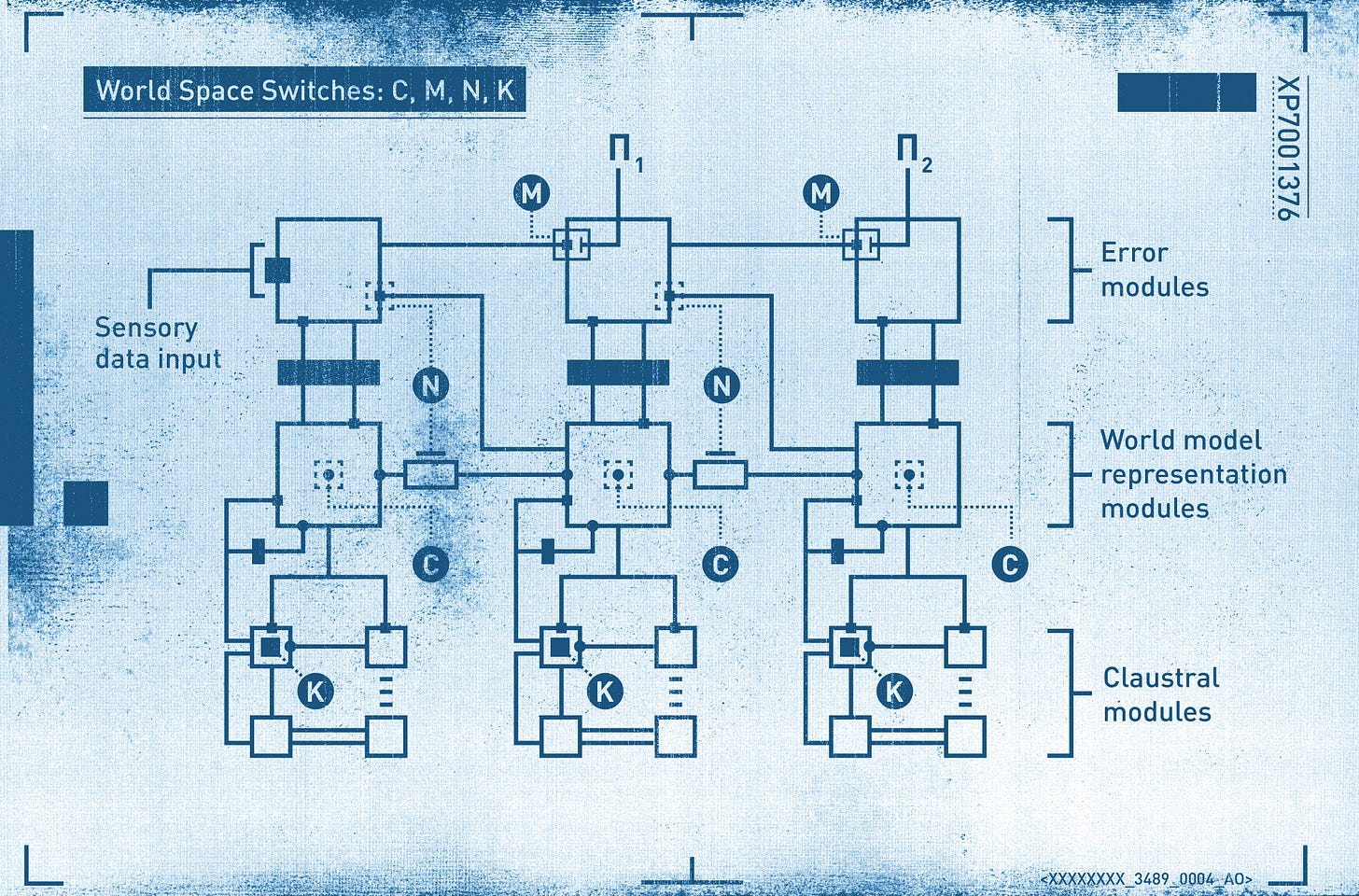
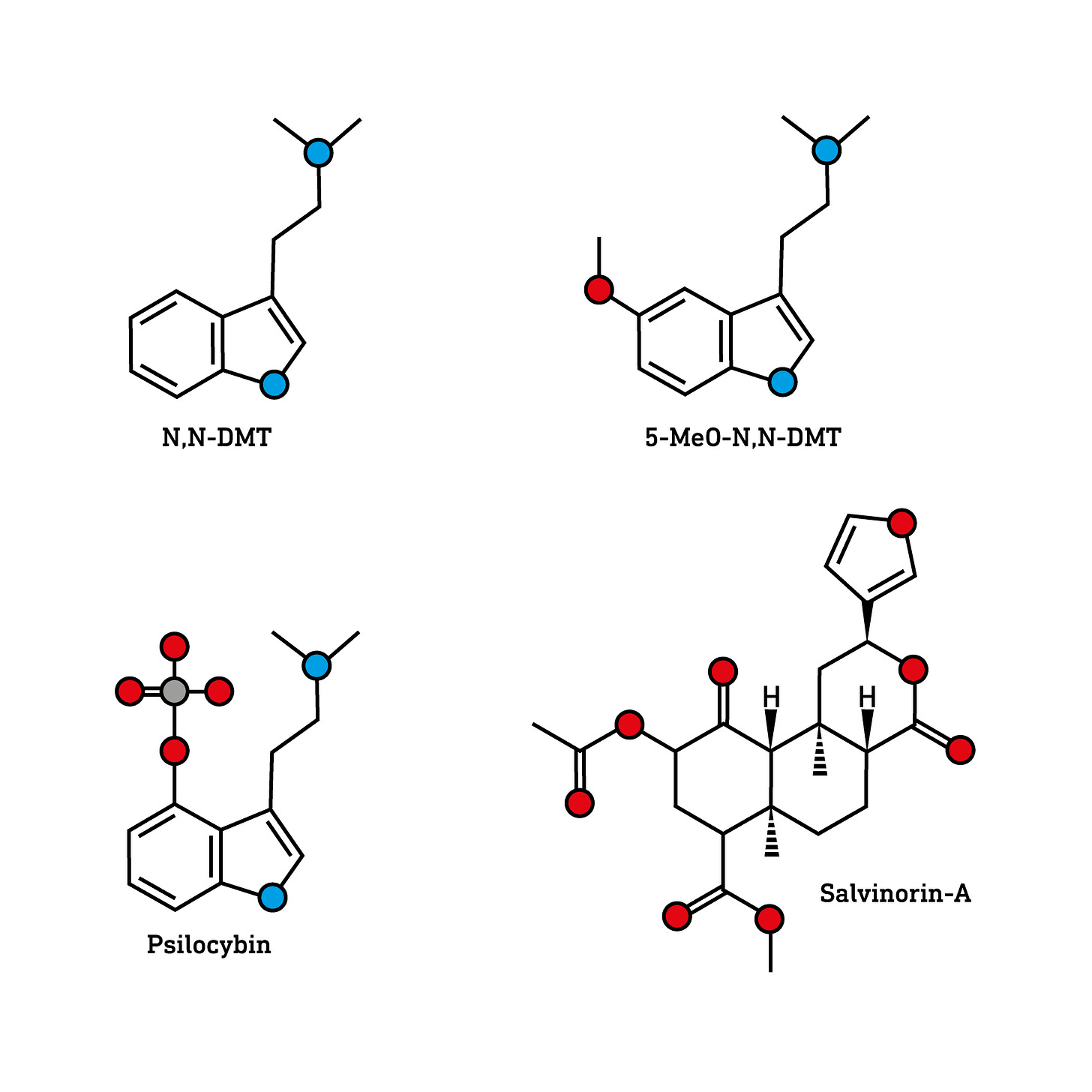
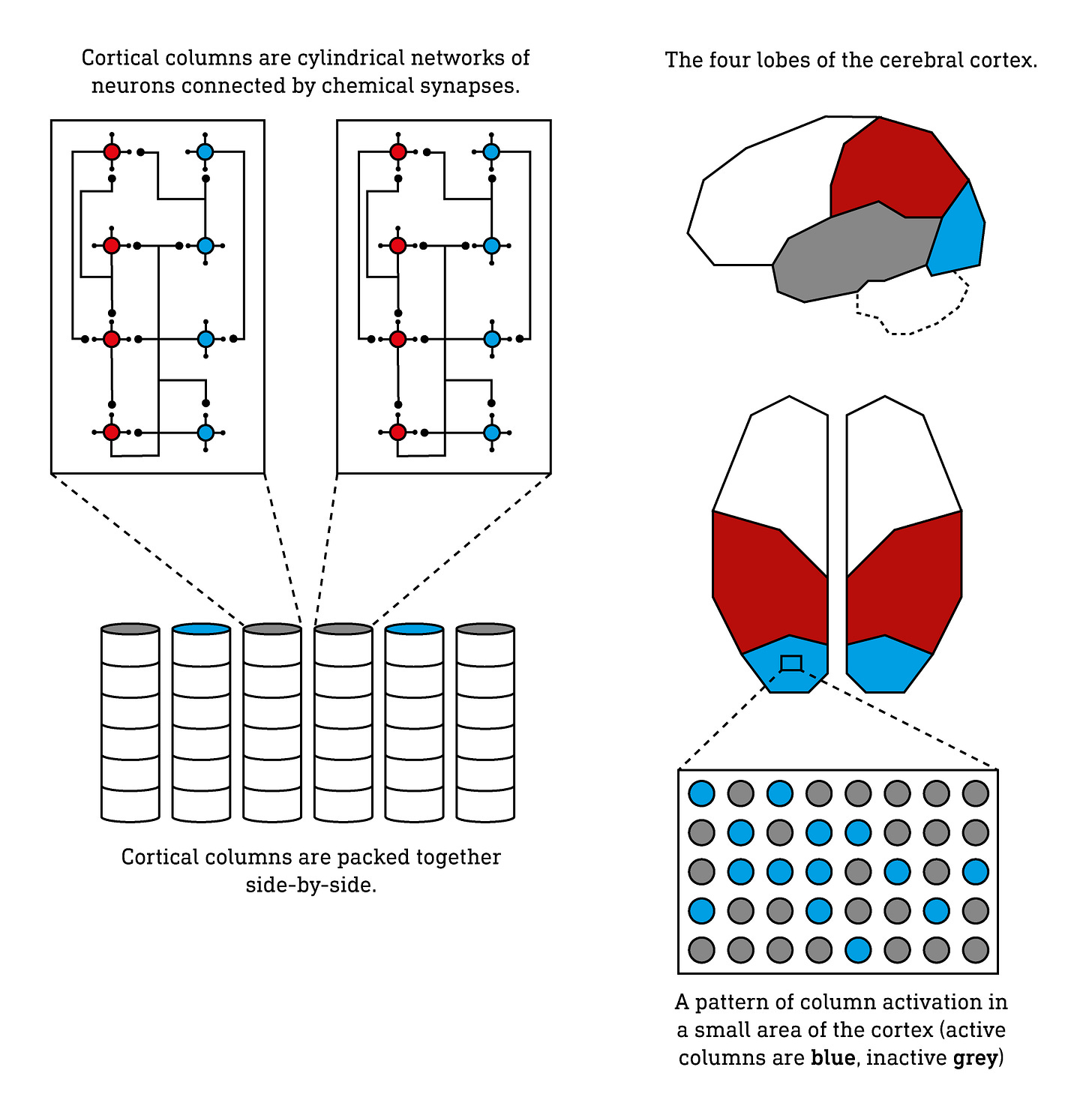
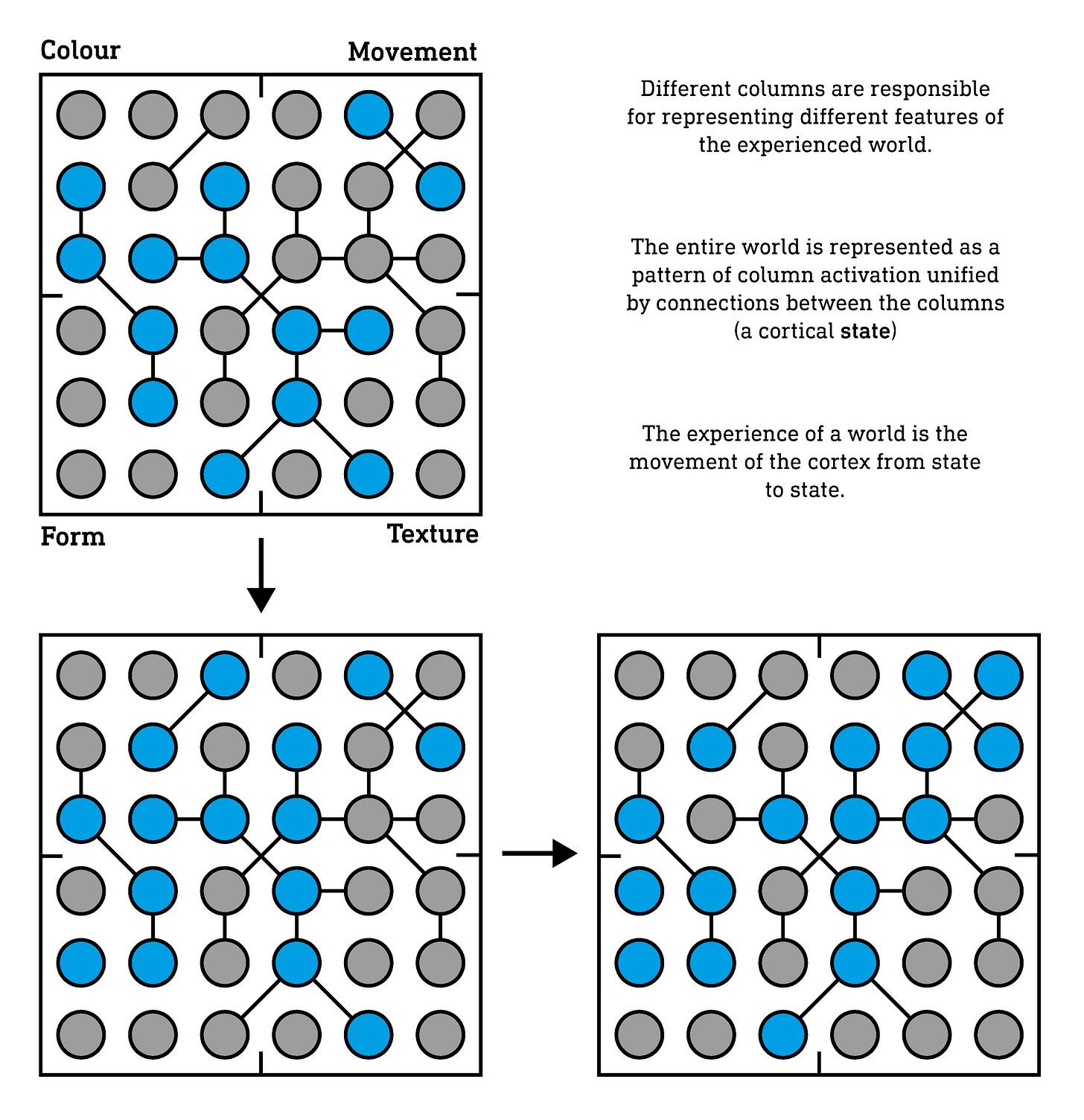
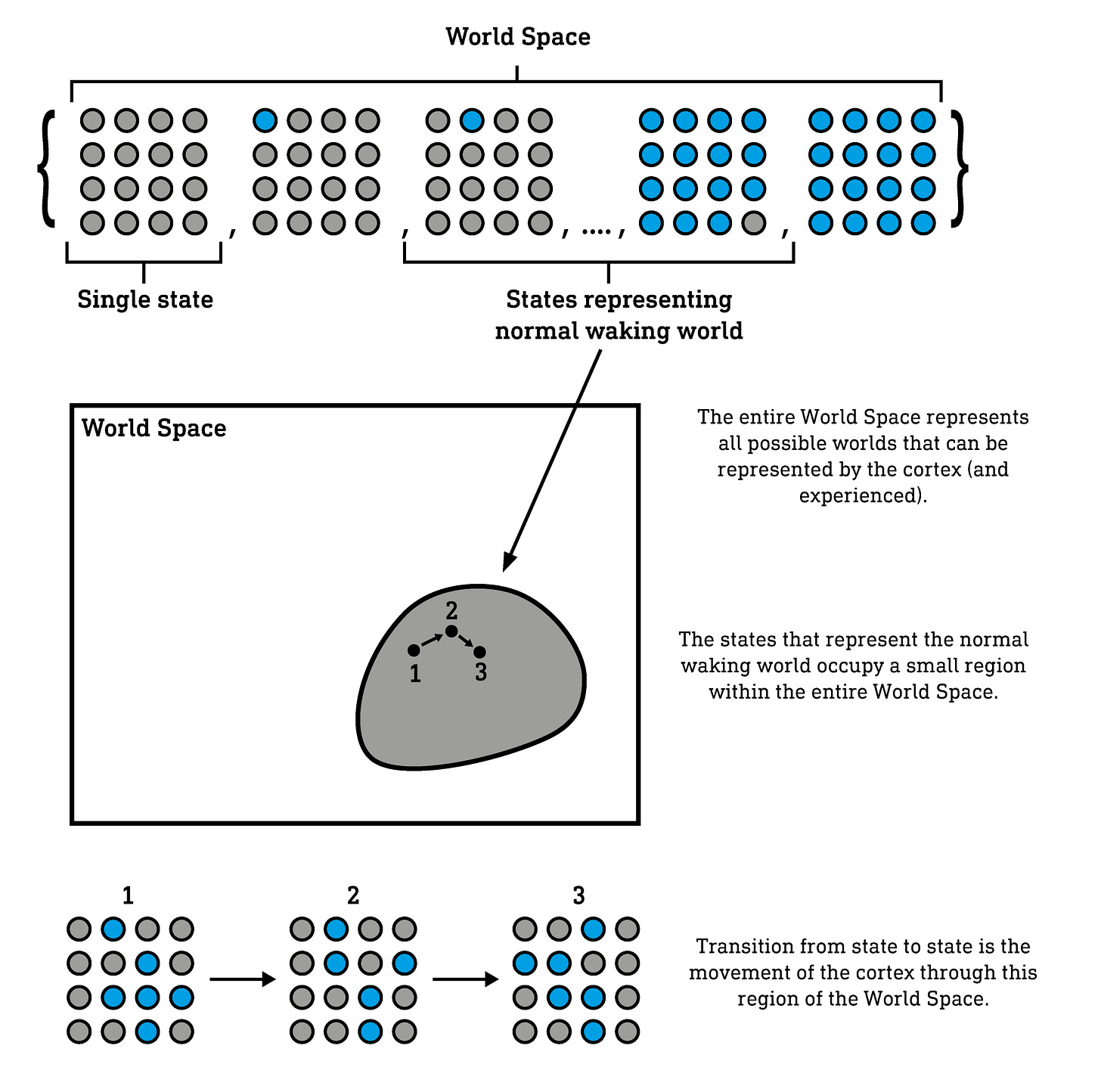
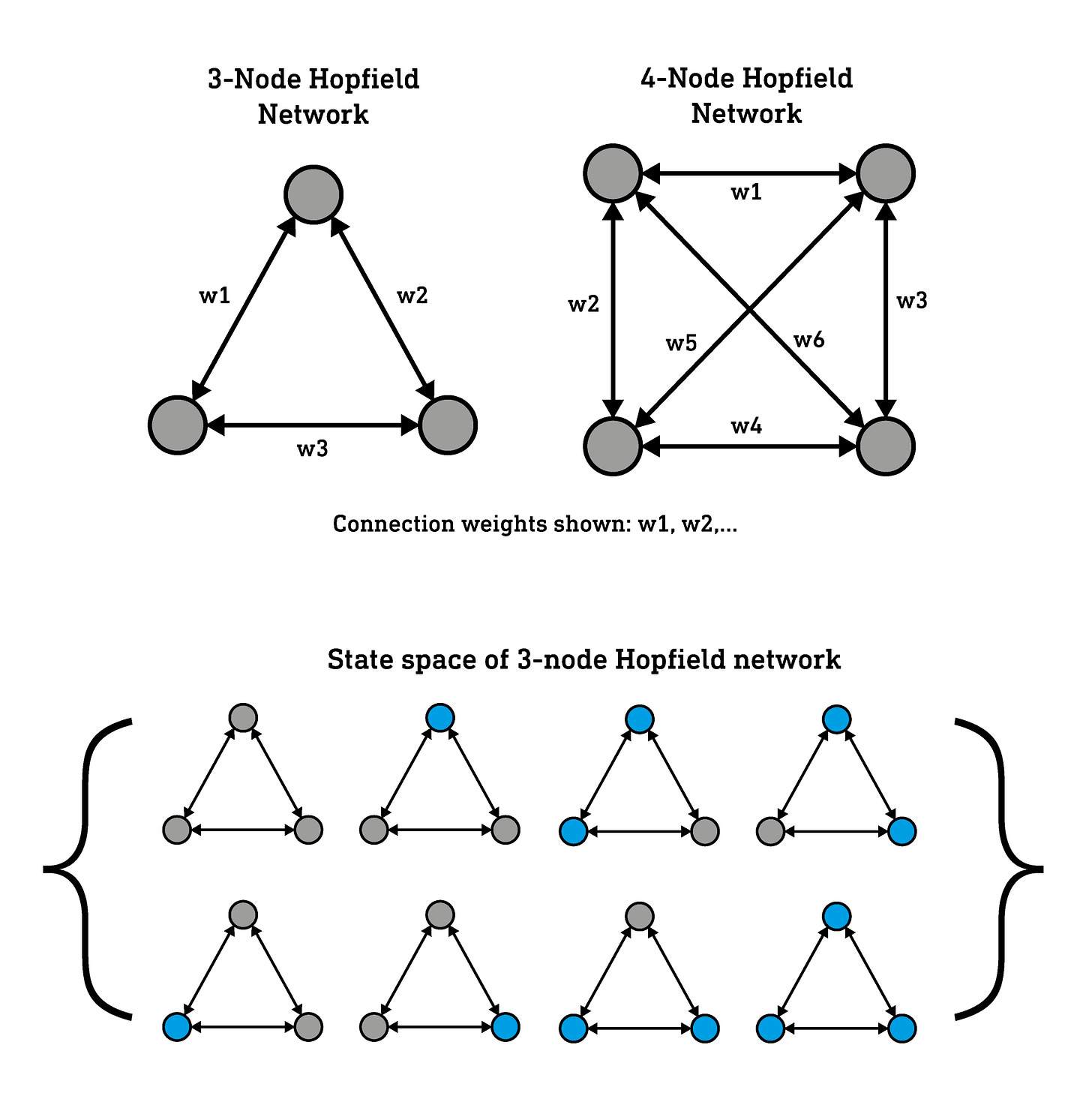
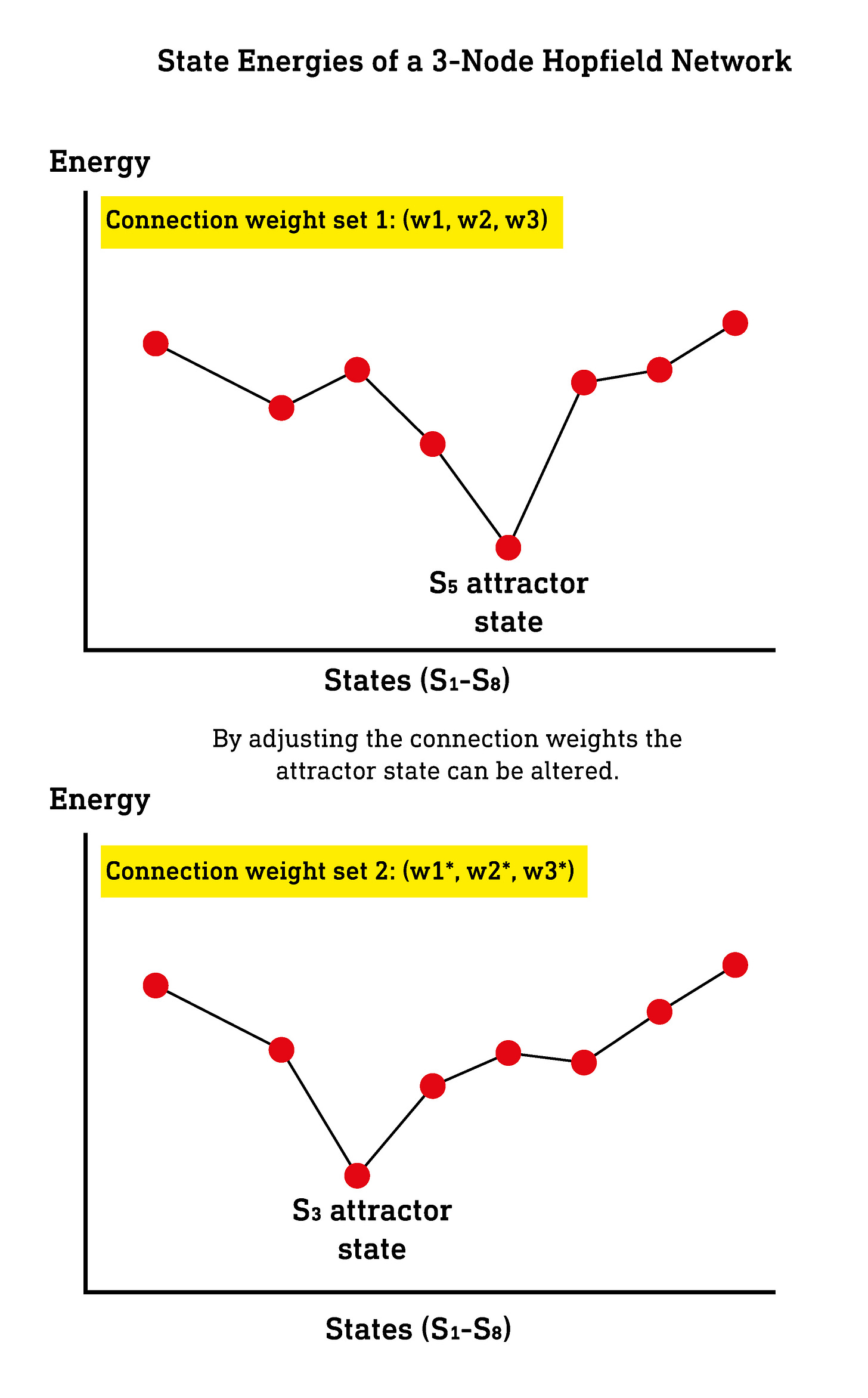
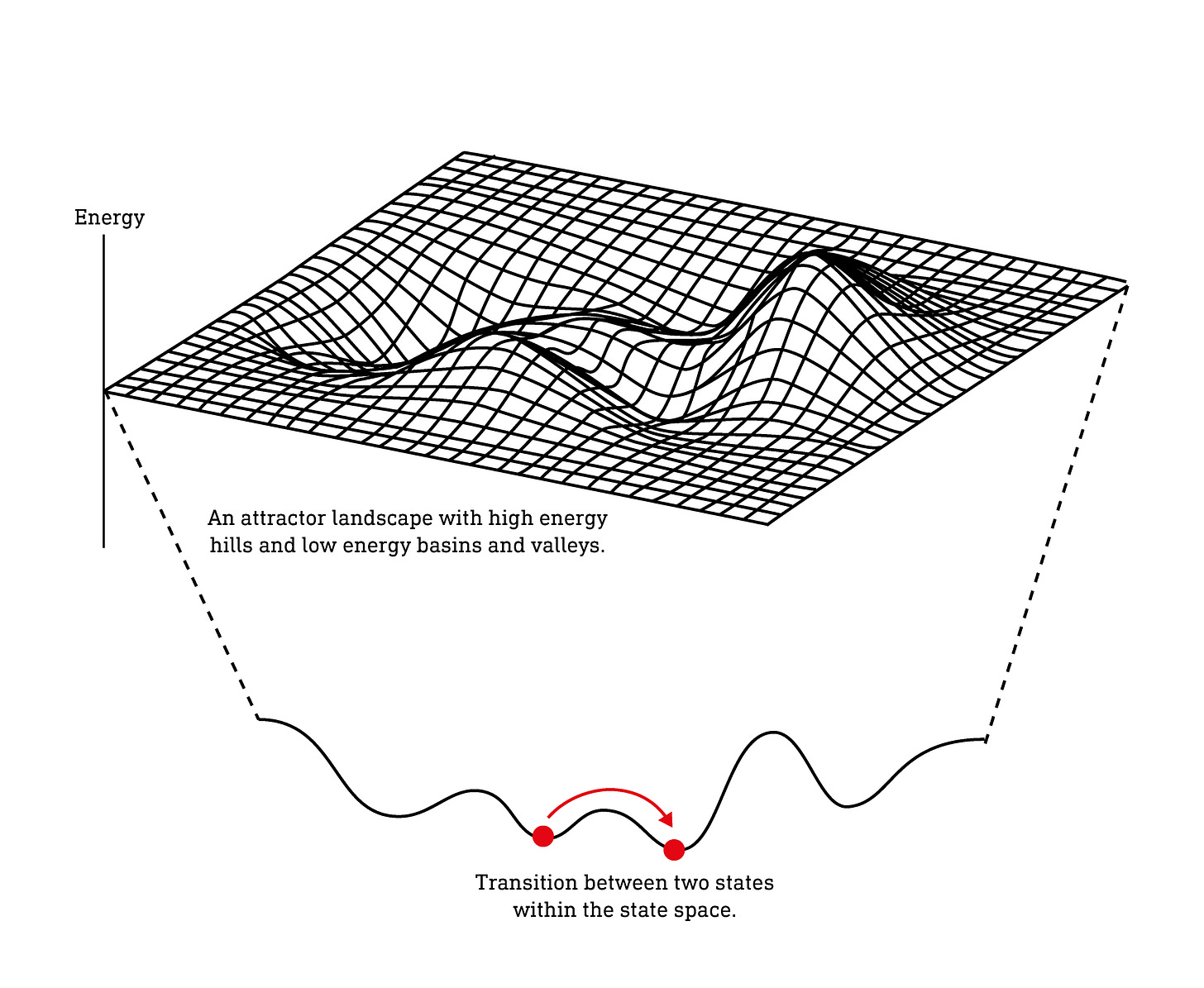
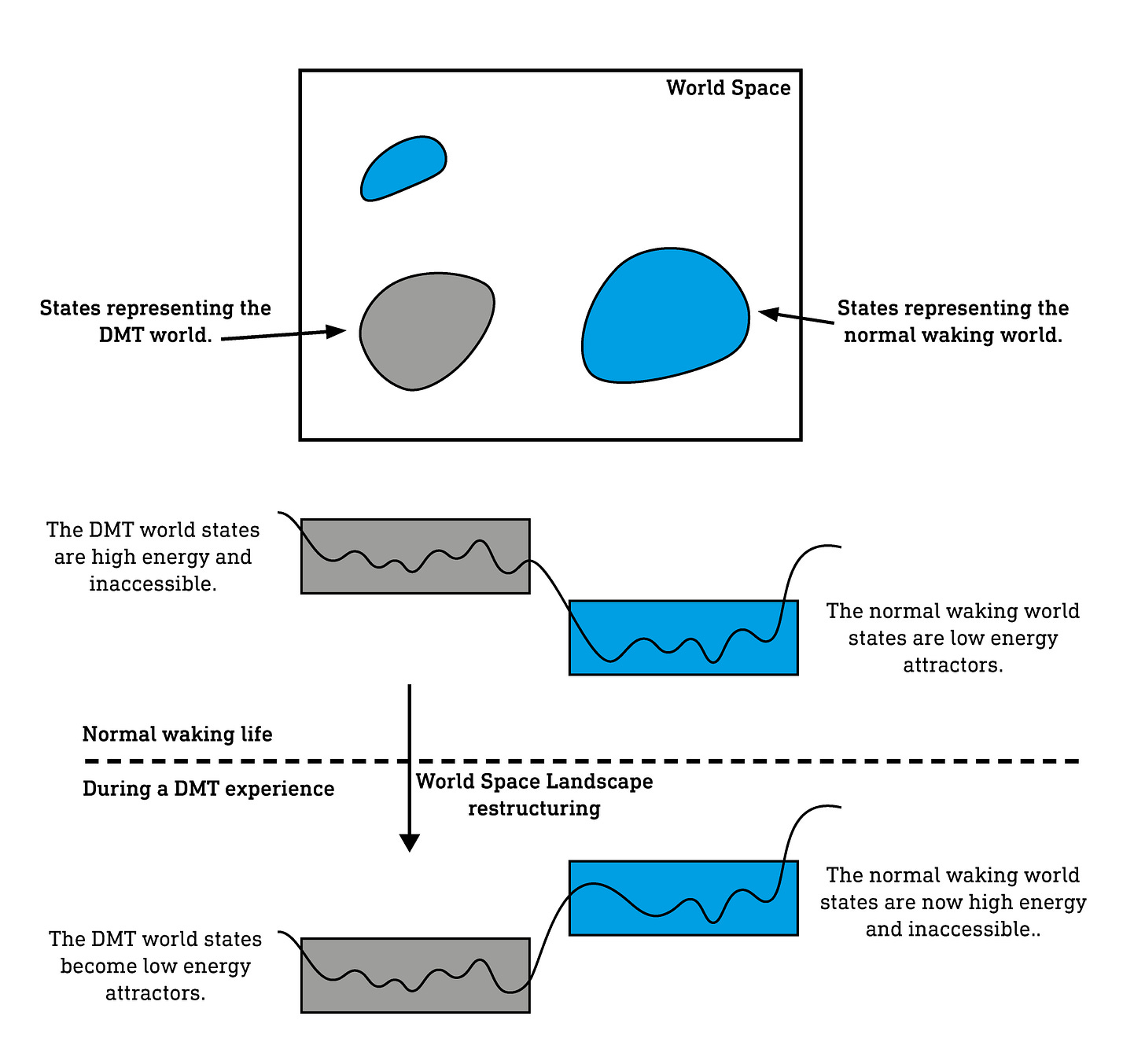



great read!
Fantastic article as always Andrew, you were sorely missed at breaking convention. Thanks for your continuing education on these most interesting states and how they come to be! Your books, online course and substack have been nothing short of inspiring! 🙏